Dear Kula Diaries,
A few weeks ago I received the following question in the Kula Diaries Vault:
What is the most memorable volunteering experience you’ve had?
As I began to write my answer, I realized that I had a lot more to say — and I wanted to share a special story that has, until now, been mostly untold.
For the record, I’ve held a lot of memorable volunteer positions in my life:
Volunteer, Lancaster General Hospital Emergency Room
Volunteer, Spalding Leadership Program — Lancaster County Court System (I volunteered as a judge’s assistant for a semester)
Volunteer, Washington Outdoor Women — Backpacking Instructor 2008-2019 (the overnight programs ended due to COVID)
Volunteer, Merrill Gardens — played my violin at an assisted living facility
Volunteer, Mason County Highschool — Environmental Stewardship Program at Theler Wetlands (Belfair, WA)
Volunteer, Rescue Dive Team — Mason County Sherriff’s Office
Volunteer, Washington Trails Association — Worked on a trail crew repairing trails in State Parks
Big Brothers Big Sisters — Student Mentor
Adopt-A-Highway — Snohomish County
Most recently, I’ve felt that the line between service and ‘work’ is very blurred — for instance, I spend a huge portion of my time doing things that I am not specifically paid for (i.e. teaching hygiene classes, volunteering to clean up litter, teaching free backpacking seminars, etc…), but these activities are also intrinsically tied to my company — which is very important to me, because I truly believe that leading a company with service to others is the only way.
My stint as an emergency room volunteer took place while I was a college student — this was the year before I ended up getting a job as a trauma unit assistant. One night, a patient came in with a badly cut finger, and I was watching the doctor stitch up the patients finger… and suddenly, I started to feel tingly and weak. Quickly, I walked out of the room and sat down — simultaneously realizing that I hadn’t eaten anything for dinner and that I had been about to pass out.
On another occasion while I was volunteering for a shift at the hospital, I looked over at one of the rooms in the ER and I saw my Latin professor sitting there. “Stacy!!”, he exclaimed (calling me by my nickname), “What are you doing here?!”. “I’m volunteering,” I replied — stunned to see him in a hospital bed. He looked so… vulnerable and frail… he didn’t even seem like the same man who I had reoccurring nightmares about when I fell asleep in a panicked state thinking about trying to pass my Latin Prose Composition class. He explained to me that he had gotten lightheaded and had collapsed at home. He told me that when he woke up, he had exclaimed, “JESUS HAROLD CHRIST!” to the befuddled EMTs… and then said, “Hey, at least we know what the ‘H’ stands for now!”.
These volunteer experiences helped to shape my life in so many ways — but as I reflected back on all of them, there is one that — very clearly — had a deeply profound aspect on every single area of my life. This won’t be a surprise to regular readers of The Kula Diaries — but, without a doubt, my experience as a volunteer at Hopewell Furnace National Historic Site (from 1992 - 2004!) was, by far, the most important and memorable volunteer experience of my entire life.
I never felt like I fit in much when I was a kid — I was bullied for having really short hair and bullied for having a southern accent. In the 1990s, people referred to me as a ‘Tom Boy’ — and I loved that term, because I thought that it embodied everything about who I was. Needless to say, I did not feel at home with my peers — and so, when my I told my mom that I wanted to volunteer at Hopewell Furnace National Historic Site when I was 12 years old, she didn’t hesitate. It didn’t matter that they had never had children volunteers who weren’t just their parents’ sidekicks. My mom took it seriously, and we contacted the park ranger to ask if we could attend the volunteer training.
A park ranger named Frank Hebblethwaite changed my life that summer, when he agreed that me and my sister could become the very first children volunteers at Hopewell Furnace National Historic Site. We would have to attend an entire week of volunteer training and learn how to do ‘ghost interpretation’. Ghost interpretation is a specific type of ‘living history’ interpretation where the ‘actor’ is ‘in character’ as a person who lived in the past, but is simultaneously aware of the present date. Volunteers in Historic Williamsburg, Virginia, for instance, are not ghost interpreters — they are fully in character and they pretend to have no knowledge of life in 2024. As a ghost interpreter, however, we had a bit more freedom — which was also how I could explain why my character from 1836, named Adoline, had braces on her teeth. “The rangers told me I needed them… it has something to do with my teeth being straight,” I would say to visitors who thought they were being clever enough to ‘trick’ me.
My character, Adoline, was based on a real person who had lived at Hopewell Furnace during the 1800s. As volunteers, we were required to do extensive research on the furnace and its history, which included learning about the people who had lived and worked there. As I read through the comprehensive history, the name Adoline caught my eye: she had been a servant to the Brooks family at the Ironmaster’s Mansion and she had lived in the attic. While I’m sure that Adoline’s real life had not been a proverbial walk in a National Park — I felt immediately drawn to her story, and, so, as I slipped on my reproduction period clothing (*ahem* not a costume)… Adoline emerged.
My sister Mare and I started volunteering at Hopewell Furnace in 1992, and I continued volunteering at the park until I left for the Park Ranger Academy in 2004. It was, without a doubt, the most influential and important volunteer experience of my life. During those years at Hopewell, my sister and I were seen as peers to the other volunteers — we were not treated like annoying children who just wanted to dress up in costumes. Instead, we were trained as docents who would give daily tours to visitors of The Big House, the Ironmaster’s Mansion at Hopewell. There were many days when we were the only volunteers at the Big House, and the rangers trusted us entirely to host and teach the hundreds of guests who visited the park.
Over the course of my over 12 years at Hopewell Furnace, I had the opportunity to do and see so many things that I never would have experienced otherwise. I had the chance to learn how to knit and to learn how to make wool yarn. I learned how to make apple butter… and normal butter. I cooked bread in a brick oven. I cooked a chicken in a brick oven. I cooked entire meals in a brick oven. I spoke to park visitors and gave tours. I performed music in front of large audiences. I got to ride in a Model A in a parade. I met and worked with countless humans of all different ages and I even learned how to make charcoal and how to cast metal stoves using sand and wooden molds.
After travelling ‘out west’ when I was 13 years old, my sisters and I completed 8 different Junior Ranger programs in as many National Parks. When I returned to Pennsylvania, I contacted the Park Rangers at Hopewell with two important questions, “Why don’t we have a Junior Ranger Program at Hopewell?”, and, “Can I make one?”. With the permission of the park rangers, I worked for months on designing and illustrating not one, but two Junior Ranger programs for kids of different ages. The park rangers even took me on a trip to the print shop so that we could obtain a quote for the printing and production of the new programs. The day that we launched the Junior Ranger Program was one of the proudest days of my young life — Every time I was at the park, I’d watch excitedly to see all the kids, running around, clutching their Junior Ranger booklets. I wanted them to feel the same love and excitement that I felt for this place — and it soon became very clear that they did.
I loved working at the park, because it was an opportunity to be myself… without being myself. As soon as I slipped on my reproduction period clothing — I was somebody that people wanted to talk to. I wasn’t the dorky, awkward kid that felt uncomfortable around other people. Instead, I had something to share — and people were interested in what I knew and what I had to say. During those days and years when I stepped into the shoes of Adoline, I was also able to meet myself. As Adoline, I was confident and knowledgeable and creative and enthusiastic. I wasn’t afraid to share my ideas with others, and people didn’t laugh at me when I said something. During a time in my life when I felt very uncomfortable about who I was — volunteering for the National Park Service gave me a sense of self and purpose, when I had a hard time finding it on my own.
It’s funny — you start volunteering because you want to give to something bigger than who you are… but what I’ve always found is that you always end up receiving more than you give. Volunteering for The National Park Service changed the course of my life forever. Josie Fernandez, one of the youngest female Superintendents in National Park Service History was a role model for me during a time when I really doubted myself. She presented me with the Superintendent’s Award for Volunteer Excellence for my work on the park Junior Ranger Program — and it felt like the most important day of my life when I received that award. It was the next Superintendent at Hopewell Furnace National Historic Site, a man named Bill, who suggested that I should attend the Park Ranger Academy when I confided in him that I was having second thoughts about a career in medicine. No matter where I was in my life — my experiences at Hopewell seemed to continuously urge me on towards something bigger.
I’m going to take a little break in this story to tell you another one — a story about a man named Howard. After I graduated college, I took a job working for a golf course as a hot dog girl. As you might be able to imagine, being a hot dog girl was not my primary aspiration in life — but it was the only job I could find after graduating college and deciding that I needed to seriously consider whether or not I wanted to go to medical school. While I was working at the hot dog stand, I was simultaneously and obsessively searching Monster.com for real jobs. With my fancy-pants liberal arts education, I felt like a complete disappointment each day that I arrived at the golf course and slopped sauerkraut and hot dogs into the small metal cart. One day, I came across a job as a marketing assistant for a woman who owned a print shop and marketing agency. I applied for and got the job — which turned out to be entirely different than what I thought it was going to be. I had imagined myself working on exciting projects with entrepreneurs — but instead I found myself making copies, giving people estimates on their printing projects, and driving to Whole Foods to pick up lunch for my boss.
I had been working for the print shop for less than a year, and my mental status was… well… let’s just say that going out into the back stairwell to have panic attacks on a daily basis was not a high point in my life. My boss routinely told me to lie to customers and I felt stressed and anxious most of the time. Furthermore, since I had all but abandoned my plan to go to medical school after bombing the MCATs, I felt like a complete and utter failure. One day, a man named Howard walked into the shop. Howard was a retired college English professor in his 80s who wanted to make some copies — I can’t even remember what he wanted to copy, but I quickly placed his documents in the Xerox machine and charged him the few dollars that he owed. Without me mentioning it, Howard must have sensed my discomfort in my life, because he asked me how I was doing, and he seemed genuinely interested. He continued to return to the print shop — almost weekly — to make copies. I had never met anybody who needed to make so many copies. Each time, he’d chat with me cordially and ask me how I was doing… and then one day he said, “Do you like to write?”. I smiled, “I love to write!”, I said, “But I haven’t done it much lately.”
He looked at me with a sparkle in his eyes… and that’s when he gave me The Assignment. “Well, let’s do something then… how about I give you a prompt… and you write an essay about it for me? I’ll come back in a few days and you can give me the essay… and then I’ll tell you what I think about it.”
I was ecstatic. Suddenly, it felt like my life had taken an incredible and unexpected turn — I was filled with a new zest for life and an excitement about the possibility of being creative again.
My first prompt was this one:
RECALL A POINT IN YOUR LIFE THAT YOU WERE HAPPY.
The reason that I’m sharing this story about Howard and The Assignment… is because just a few days ago, as I started answering the original question about my volunteer service at Hopewell Furnace… I discovered my original essay, tucked away in a box of personal items that my mom had sent me. The essay was printed out on three pages of high quality paper from the print shop (against anybody’s knowledge). And, I’d like to share it with you all now:
RECALL A POINT IN YOUR LIFE THAT YOU WERE HAPPY : MY EXPERIENCES AT HOPEWELL FURNACE NATIONAL HISTORIC SITE
by Stacy Ruland, 2004
I can still remember the scent of the air the first time my mom took my sisters and me to Hopewell Furnace National Historic Site. The moisture on the grass rose into the air, mingling with over 200 years of charcoal dust, as the heat of the summer crept into the morning. "So, what is this place anyway?" I questioned skeptically. Since moving to Pennsylvania, my mom had found herself busy simultaneously trying to find a house and keeping three young girls entertained. As a result, between five hour stints of house hunting, we were occasionally "rewarded" with an exciting trip to some educational destination. Weren't there any amusement parks in Pennsylvania?

"It's an old Iron Furnace, I think you all are really going to enjoy this," my mom replied. Even two year old Theresa seemed to roll her eyes in disappointment. An Iron Furnace? That sounded like a place for adults. As we walked down the gravel path into the park, my eyes lit up with excitement. There were almost a dozen people dressed in reproduction clothing reenacting life at the Furnace! We nearly stumbled over ourselves as we ran from one interpreter to the next - soaking in the fascinating history. When the bread was ready in the bake ovens, our nostrils flared as it was laid out before us with its perfect golden crust. Our hands imitated the motions of a woman demonstrating the spinning wheel in the tenant house. Our eyes sparkled with the reflection of molten metal as we watched the molding demonstration in the cast house. This is where I wanted to be - this is where I wanted to spend my entire summer, immersed with these people who wanted to share a bit of American history with the world.
We finally found our new house in Pennsylvania, and my mom continued bringing us to Hopewell Furnace as visitors at least once a week - sometimes more. Excitement would mount each time we made the half hour drive to our secret paradise. And then it happened. After talking at length with some of the rangers that we had grown to know, my sister Mary and I mentioned that we would like to be volunteers at the park.
This was a new challenge for the park - while children had volunteered before, they had usually done so because their parents were volunteers. This was the first time that children wanted to volunteer on their own initiative. We were told that we had to have an interview with a ranger named Frank Hebblethwaite. I was nervous for the interview - if this ranger was as intimidating as his last name, we would never become volunteers. We trudged down the steps into the ranger offices of the National Park - a place that seemed at the time like a secret lair, a place that no visitors had gone before. We were led into a small cubicle where Frank was waiting - he was nothing like what I imagined. He was excited that we enjoyed the park so much and he asked us why we wanted to volunteer. We were told about the importance of the park, given some literature to read about the history of the furnace, and that was it. Once he was satisfied that we weren't going to have a hissy fit and start throwing priceless artifacts, we signed waiver release forms, and we were official volunteers!
The volunteer training was wonderful, getting my reproduction clothing was thrilling, but nothing can compare to my first day volunteering at the park. My mom dropped my sister Mary and I off at 9:00 in the morning on a Saturday. After getting instructions in the office, we adjusted our bonnets and opened the door and stepped out into a new world - a world that was our home in 1836. Now for the first time as villagers, we walked down the steep stone steps to the Ironmaster's Mansion. Once at the bake ovens, we became acquainted with another volunteer named Sharon who would help us bake bread. We reveled in each moment - kneading the dough in the large wooden bowl, watching the bricks in the bake oven to see when they were white with heat, and then sinking our teeth into the buttery warm bread after we pulled it out of the oven with a large wooden paddle. Soon Mary and I were seasoned volunteers. We were occasionally on our own - giving tours of the molder’s kitchen and dining room - explaining the artifacts to dozens, even hundreds of visitors a day. "This is a Red Ware Pottery", Mary would say. "And this is where the molders would eat their meals." I would say, pointing at a large wooden table in the musty dining room.
At one point we were volunteering almost every day of the week - my mother tirelessly driving us to the park each morning and returning each evening to pick us up - our faces glowing with the excitement of the day. Looking back on my full-time volunteer days at Hopewell Furnace, I know that they were some of the best days of my life. Our worldly desires were not for shopping in the mall or playing video games. We only wanted to go to the park and share our small amount of knowledge with others. Each time my sister and I walked down the gravel path, looking out over the village we were completely content.
Clutching our knitting baskets, we talked with visitors, learned from the other interpreters, and enjoyed eight hours of not being able to fight with each other (my mother had given us strict instructions not to fight in front of the visitors). As we pointed out the artifacts in the Ironmaster's Mansion - the butter churn, the iron cooking pots - we were giving people a glimpse of the past - a thing which is all too soon forgotten in this age of SUVs and Mp3s.
I have a full time job now that keeps me busy, but I still try to volunteer at the park as often as possible. Before I left for college, I wrote and designed a Junior Ranger program so that kids of all ages can learn about the fascinating history at Hopewell Furnace. I volunteer several times a year on special event days, and when I see the excited children running around the park holding their Junior Ranger Programs, I feel as if I am giving back to the park each day. It has been 12 years since I became a volunteer at Hopewell Furnace National Historic Site. I am almost 24 years old, and now when I visit the park, I drive my own car - I am no longer an 11 year old girl in the back of my mother's mini van. I still feel excitement when I see the bell tower of the cast house poking out over the vast expanse of lush green fields. Frank Hebblethwaite is still a ranger at the park, and I continue to remain one of the only people that can spell his name correctly. While my normal life continues every day, and I find myself caught up in the stressful pace of society on many occasions, I often think back to my carefree days at the furnace. Days when I had the patience to learn how to knit a scarf, the genuine desire to bake bread from scratch, and the time to appreciate everything around me.
Over the course of the time that I knew Howard, he assigned me many different essays — each of them was very specifically focused on writing about something that I was grateful for… or something that was important to me. Every week, he would arrive at the shop to make his copies… and each week he’d spend time with me to discuss my most recent essay… and give me a new prompt. Excitedly, I would sit down at my computer each week to write… and each week, I would anxiously look forward to sharing my essays with Howard. While I was miserable at the print shop, I felt a deep sense of gratitude and love when I wrote my essays for Howard. Oddly enough, things in my life started to shift and change a little bit. I wrote that essay about Hopewell in 2004 — just a few months before I had the ‘random’ idea to quit my job at the print shop and go back to school to become a Park Ranger. As I reflect on The Assignment, I can clearly see that Howard gave me these weekly essay prompts to help me focus on something good — he was helping me to see something beyond the ink fumes in the print shop. He was helping me to tap into the power of gratitude and to see that there was a path for me. He knew if I could sit in the feeling of that space for awhile… it would reveal itself.

Just before I left my job at the print shop, new owners had taken over the store, and they were angry and difficult to work with. One one occasion, I was using the internet to look at a customer’s website — and my new boss screamed at me for ‘using the internet’ while I was at work. With his veins bulging out of his neck he raged, “STOP SURFING THE INTERNET AND START DOING MY WORK!”. I was horrified. It was after that incident that I went to Hopewell Furnace to volunteer at the Apple Harvest Festival. “What do you want to do for a living”, the Superintendent asked me. I thought about the horrible days spent at the print shop, and I took a deep breath of fresh air and looked at the beautiful park around me — a park where I had grown from a 12 year old girl to a 24 year old woman, who still hadn’t figured it out yet. “I want to do this,” I said, gesturing to the beauty around me. “You should become a park ranger,” he replied back, “Go apply to an academy, and make it happen. You’d be great at it.”
Less than a month later, I put in my notice at the print shop — and two weeks later, I walked out. A month after that, I was on a plane to Washington State to attend the Park Ranger Academy at Skagit Valley College. I would go on to become a Ranger on the Hood Canal, where I worked for nearly 7.5 years until I was laid off in 2012. It was the realization of a childhood dream that had started a very, very long time ago.
I don’t recall Howard’s last name, and I never really got to thank him for what he did for me so many years ago. I don’t even think I got to see him before I left my job at the print shop. It’s been 20 years now since I wrote those essays, and I wish that I could let him know how much he impacted my life. I wish that he had even the tiniest clue of the good that he did for the random print shop clerk that he had befriended. But, maybe I don’t need to tell him. Maybe he knew at the time. I wonder if Howard ever went back to the print shop to make copies after I left — and I wonder if they said, “Oh, she left to become a Park Ranger!”. I can imagine him smiling and laughing, “Well, that figures”, he would have said… and walked out of the front door of the building — without ever making copies. He never really needed to make those anyway.
Friends — thank you so much for being here… and thank you for walking down this wonderful memory lane with me. If you ever have the opportunity to visit Pennsylvania, it is worth your time to visit Hopewell Furnace National Historic Site. In my happiest dreams, it is a place where I see myself — contentedly wandering the roads of a little village that taught me more about myself than anything else.
I am sending you all so much love this week!






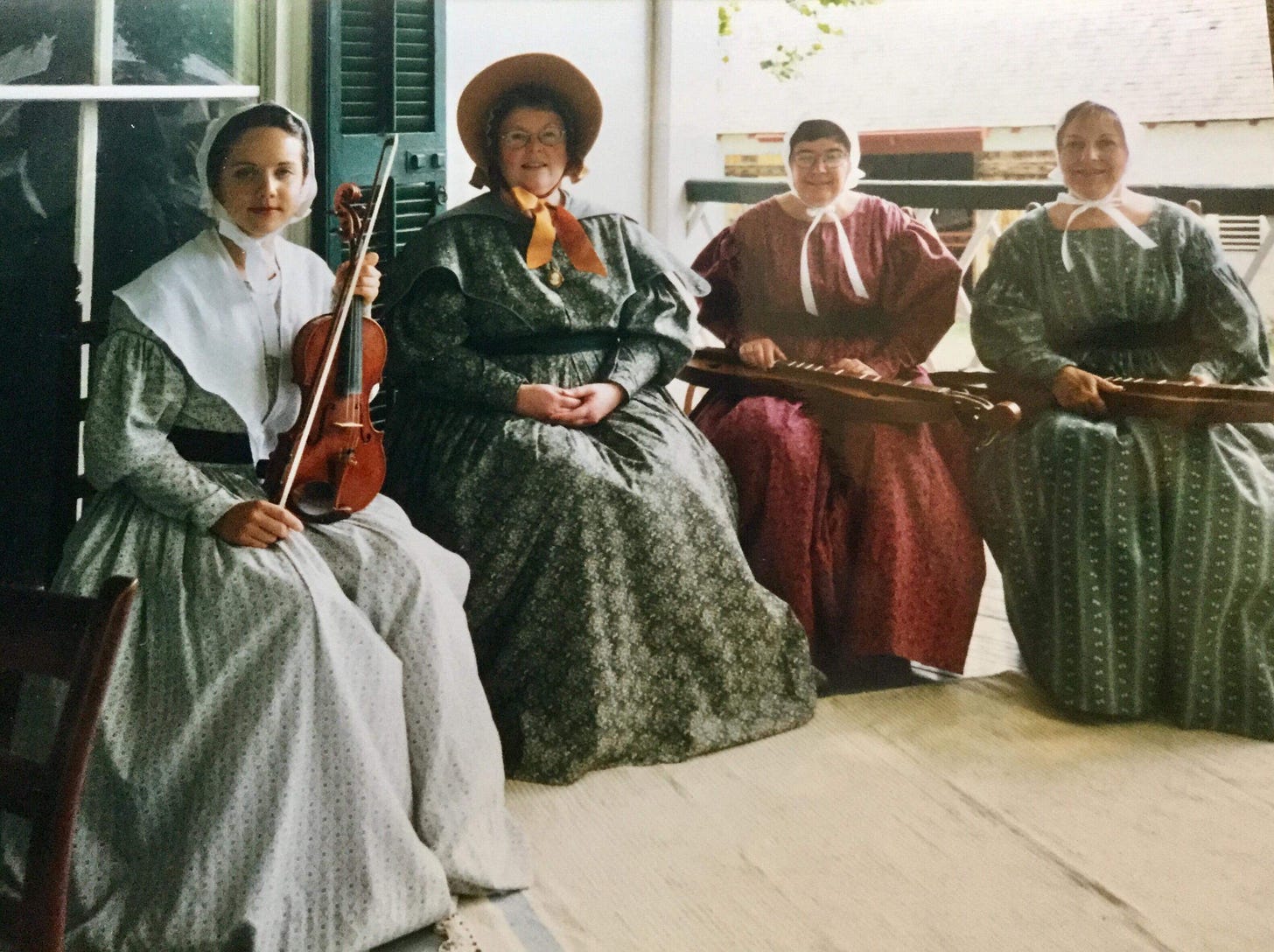
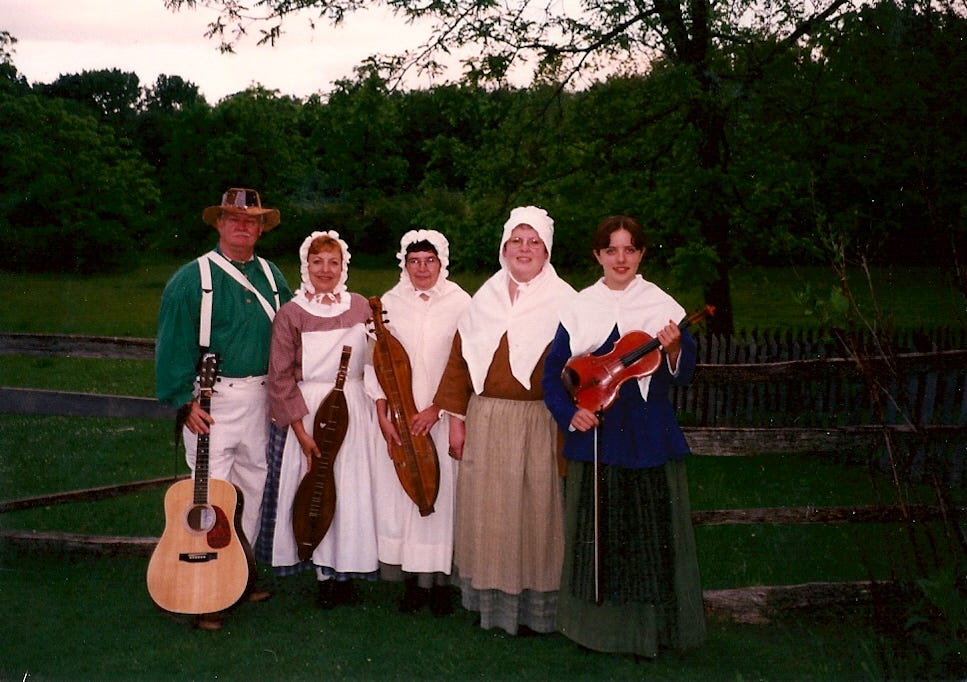
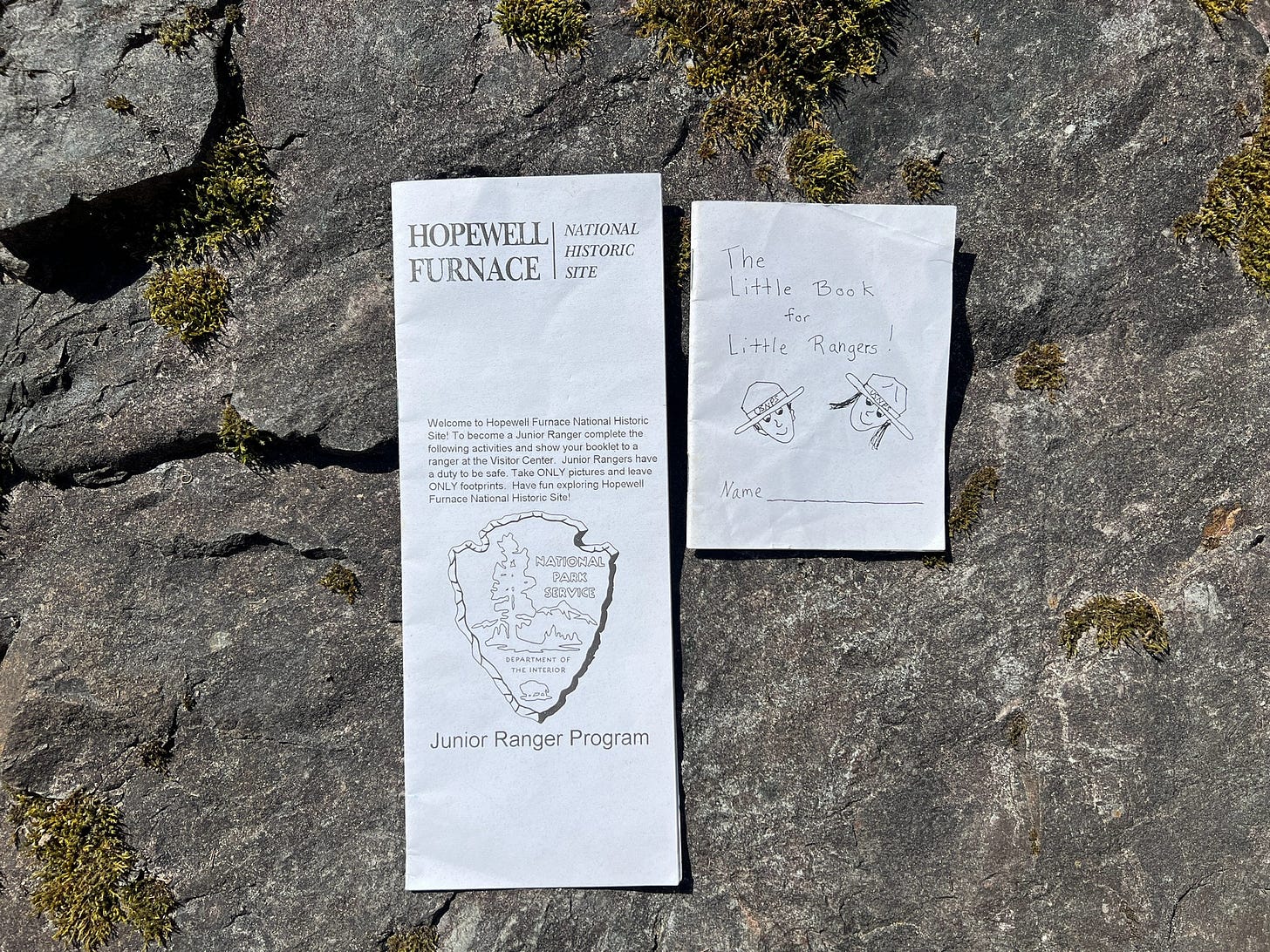

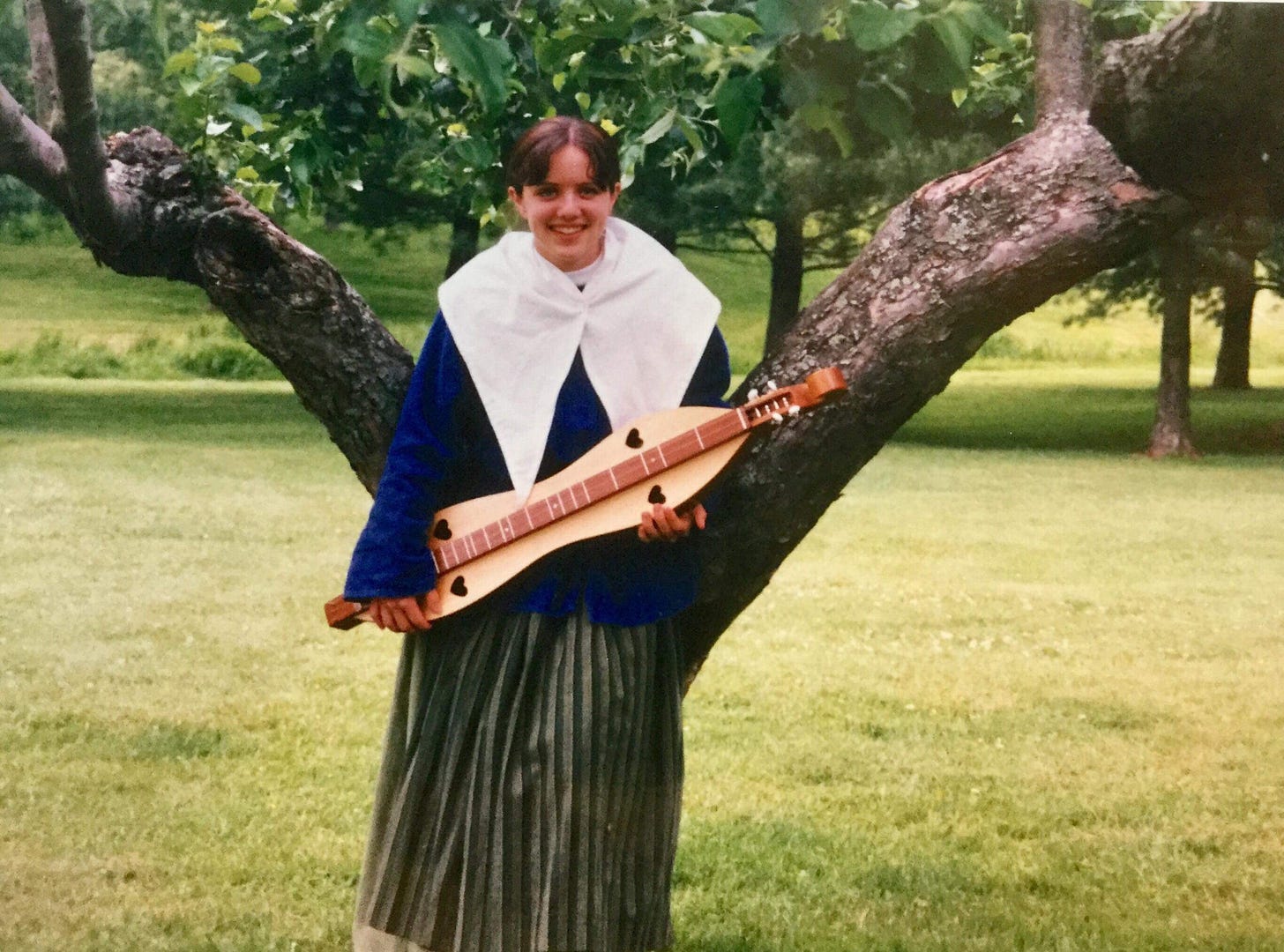
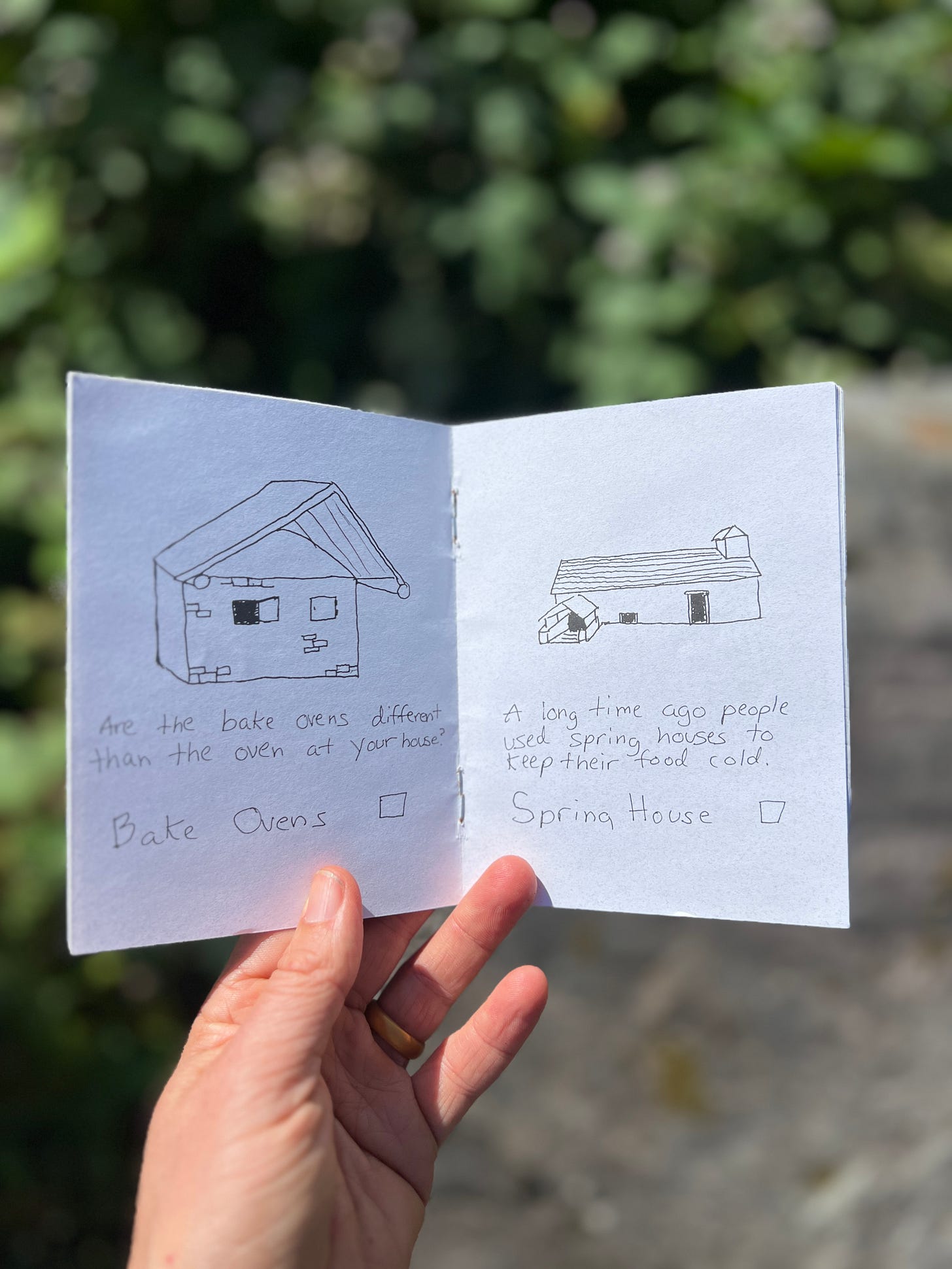

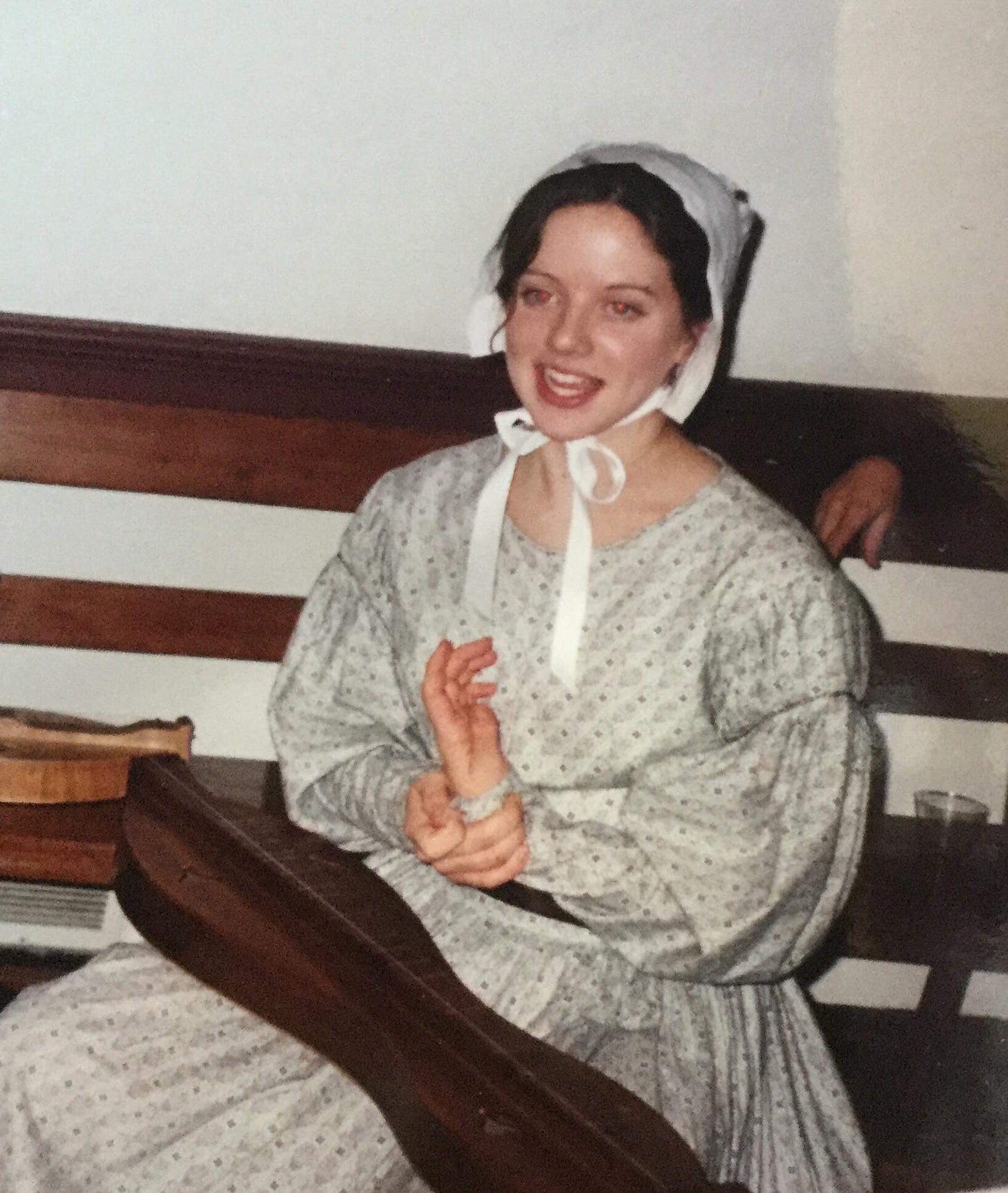


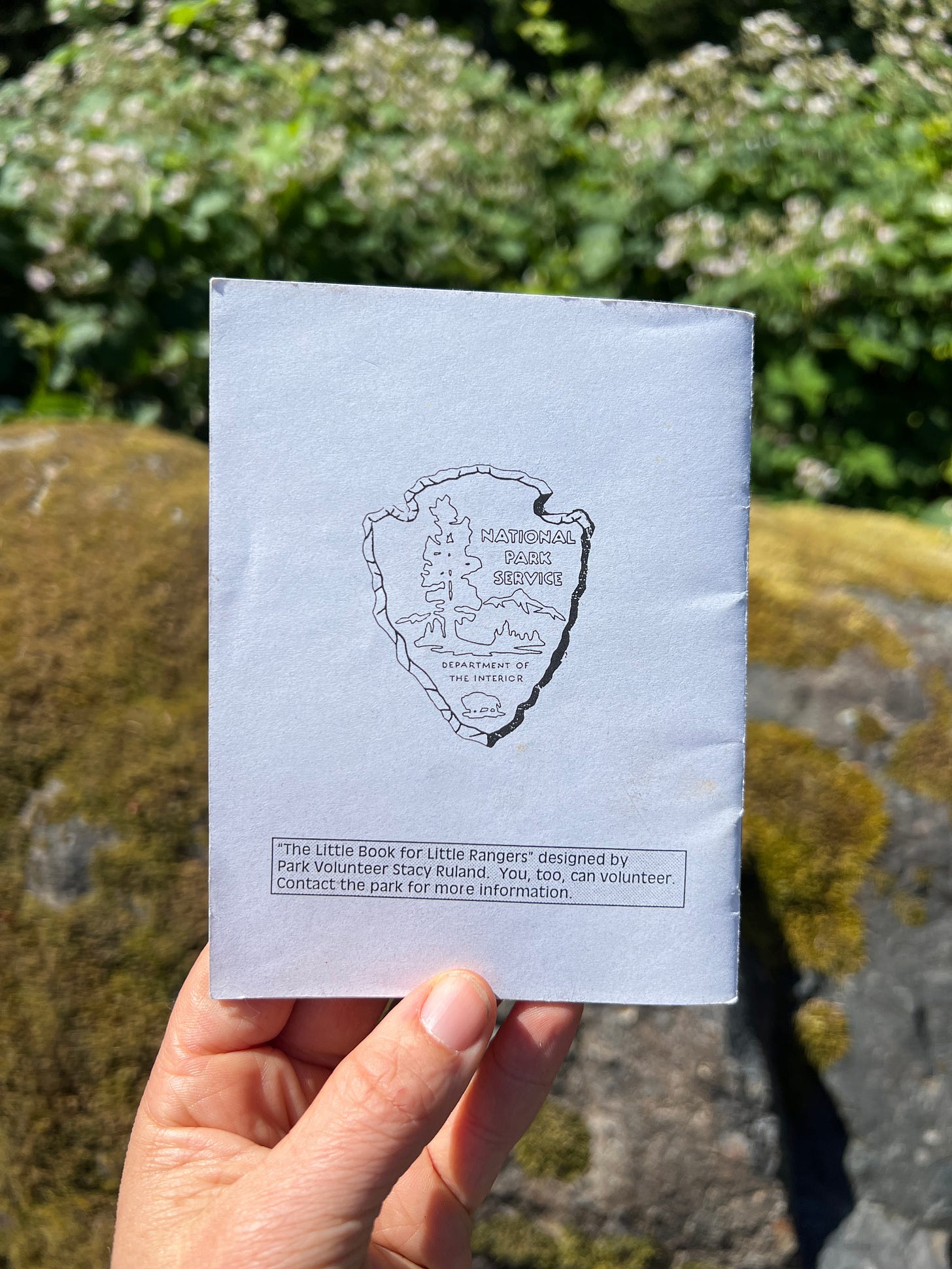
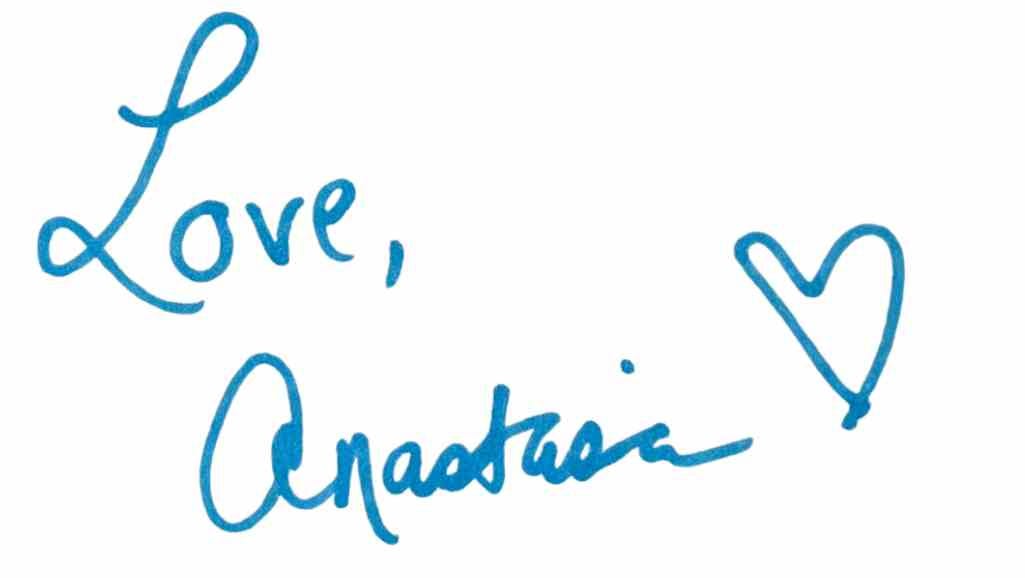
There is so much I could say about this reflection on the past inextricably tied to who you’ve become, but I I will keep it brief (because I’m a bit teary eyed.) The true gifts of gratitude and personal joy you found working at Hopewell was offered to you by the rangers, volunteers and visitors, then at the print shop by Howard. You in turn are reaching out to others to invite them to experience the same feelings through your stories and experiences. 💜
Thank you for sharing your stories with us, Anastasia, and, particular, for reading them aloud to us...I feel so much more connected to you that way and love hearing your voice. It is so very soothing!
I was a bit teary-eyed myself by the end of your story tonight, even with a smile on my face for the young and less-young you I continue to get to know. I love thinking of you volunteering at such a young age in your period clothing and how mature you must have been and think you should continue the tradition down by me at Point Defiance and the Fort Nisqually Living History Museum -- I would come visit you as often as I could to see you bring your character to life! 😃
You have lived such a fascinating life and, while I'm sure it wasn't always easy, I LOVE all the things that have contributed to who you have become!
Simply, I love you.
-- an adoring fan